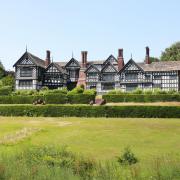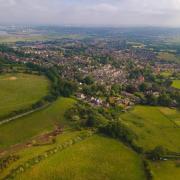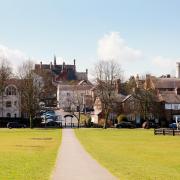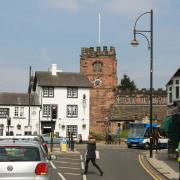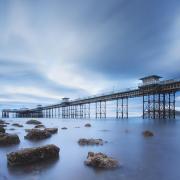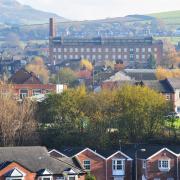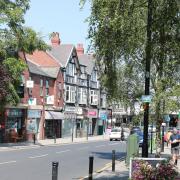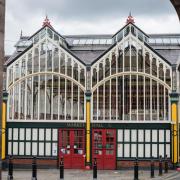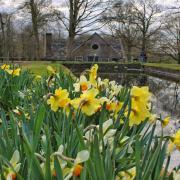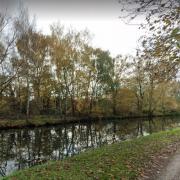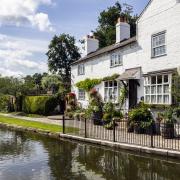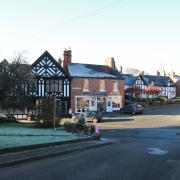Welcome to Caernarfon, Wales's largest population of Welsh speakers and home to a community dedicated to their town WORDS BY EMMA MAYOH PHOTOGRAPHY BY KIRSTY THOMPSON AND JOHN COCKS
It is difficult to keep up with Emrys Ll Jones. As the local guide dashes along Caernarfon’s historic walls he reveals fact after fact about the town he grew up in.
After just a short time with the 59-year-old, it’s clear there is no-one more passionate about keeping the history of his home town alive. He talks about the busy ports created by the booming slate industry; the remains can be seen at Segontium, a former Roman fort that would have held around 1,000 infantry and Caernarfon, as a booming market town where around 30,000 people travelled to buy from its famous market.
He said: ‘There is no place better than Caernarfon. We have such a fantastic monument like Caernarfon Castle which is a World Heritage Site. But it isn’t just about the castle. There is so much more to discover.‘This area has been very important for so many things throughout its history. The slate industry changed Caernarfon and its population rose dramatically in just a few years. It was a real boom time and the town developed fast. It would have been the Chester of its period.’
Emrys, a member of Caernarfon Civic Society, has been absorbed by the area’s heritage since childhood when he and his father enjoyed day trips to various local sites. He has given informal tours around the town for 10 years but it was two years ago that he became a professional guide. Along with other members of the society he is part of an ongoing campaign to establish a dedicated museum or heritage centre in the town.
He said: ‘We do sorely need somewhere to share Caernarfon’s vast and rich history with the people who come here. We are proud of our heritage and proud of being such a strong Welsh speaking town.
‘There are so many treasures that should be celebrated. I do the tours because history is not just about facts and figures. I want to bring it to life and tell stories about the people who lived here.’
Some work is being undertaken by Gwynedd Council as part of a �1.7 million Our Heritage Project which will see the formation of new tourist trails and events at heritage sites across Gwynedd and Conwy. In Caernarfon initiatives include a new Interpretation Centre in the Tourist Information Centre to promote everything Caernarfon has to offer.
Roland Evans, senior manager in economy and community development for Gwynedd Council, said: ‘So many people come here for one main reason which is the castle and then don’t explore other areas and heritage sites. There are many important things that happen at the castle, including the Cipio’r Castell event this month where displays and performances will be held. But it’s also about places like Segontium, which formed an important part of Caernarfon’s history.
‘We’re also working on promoting the Gwynedd Pilgrim’s Trail which includes Llanbeblig Church which would have been a stop on the trail. It’s making people aware of what other fantastic places they can see around here.’
Part of the town’s history many people have already discovered is the Black Boy Inn, the oldest pub in Caernarfon and one of the oldest in North Wales. It was built in 1522 and has been known by many names before it took its current title in the 1800s.
There are different theories as to how the inn got its name. One is the story of a black boy brought into the country on a ship, another suggests it was a navigational buoy which existed in the harbour in the inn’s early days and another refers to a nickname given to Charles II by his mother that was used by Royalists who met secretly at the venue. It is for the past decade that proprietor John Evans has run this historic inn with son Gary.
John said: ‘The inn is full of history and the name has caused some controversy over the years. This area of town would once have been at the heart of the red light district during the port’s heyday. This street was named Four and Six Penny Street. For four old pennies you could get a bottle of drink and a bed and for six you could get the same but also a woman for the night.
‘There was a nunnery at the back of the inn and the nuns would walk through the passage, which now goes through the pub, dousing themselves in holy water. There is a big responsibility keeping a place like this running because it is an important part of life in the town. But it is something that, with help from the large team of staff we have here, that I love doing.’
A part of Caernarfon’s recent history has been Galeri Caernarfon, a fantastic arts and entertainment venue overlooking the Menai Strait just outside the castle walls. The not-for-profit community enterprise was set up in 1992. Redundant buildings within the walled town were purchased and redeveloped for local use.
In 2005, the current arts building, which includes several studios for creative people, a theatre, cinema, exhibition space, cafe bar and rehearsal rooms, was opened.
The space is used by many local artists, including Branwen Lisa whose exhibition about Caernarfon, titled World Heritage Site, is currently being displayed. The Galeri is also working on a community project with the Welsh National Theatre, Theatr Genedlaethol and playwright Bethan Marlow. The event will draw on the stories and experience of local residents who will also perform in the Peblig ward of the town.
Dawn Worsley, arts co-ordinator, said: ‘This is an exciting opportunity. It will look at the local dialect, Cofis, which is unique to this area and is very recognisable.
‘People in Caernarfon are proud of their area and this will help them take even more ownership of their town. We love being a part of projects like this at Galeri Caernarfon because it is important to us to be part of the community.’
Also celebrating the town are the organisers of Gwyl Arall, a festival that showcases literature, music, art and film. The event, being held from July 6th – 8th, is the brainchild of television producer and caf� owner Nici Beech. It was after visiting Larne Festival in Ireland she was prompted to start something in Caernarfon. Just six weeks after making the decision to do it, the first festival was held.
The popular event, now in its fourth year, is organised by Eirain James, Llinios Manon Williams, Angharad Blythe, Angharad Griffiths, Manon Wyn and Non Tudur. It has attracted big names including Howard Marks and poet laureate Carol Ann Duffy. Many venues are used including a gatehouse in the castle walls and Club Canol Dre.
Nici said: ‘It’s something we all enjoy. It is very busy and you never think it is going to come together but it is worth it in the end.
‘I love that you can live your entire life here through the medium of Welsh. It is such a strong part of life. But if we can also bring more people here through the festival, show them what it’s like and what it has to offer then that is great.’



